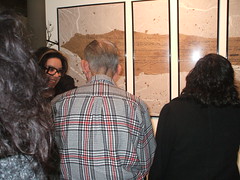What is WiFi?

It is possible to form a somewhat informed opinion on the safety or potential risks of this new technology without actually being a physicist yourself.
Biotechnology
Quite simply, Wi-Fi is the wireless technology most commonly used to connect people to the Internet in schools, coffee shops, hotels and other network locations, or to connect cell phone users to one another. Wi-Fi is certainly convenient for travelers and students, but is it dangerous? Many believe that the low-level electromagnetic waves that radiate from the wireless Internet source to each individual user can be harmful to your health, even causing cellular changes and possibly cancer in some cases.
The area covered by a WiFi Internet connection is known as a "hotspot"; this is the area in which the waves radiate to give users access to the world wide web. It can span several kilometers, although the waves cannot pass through treed areas. While in the hotspot, a laptop user can simply connect to the network, access the Internet, and check their Email or do their other business on the run.
A wireless network uses radio waves to send communications across a two-way network. A computer's wireless adapter translates the Internet connection data into a radio wave and sends it to the wireless router - the one in your laptop. This process works in reverse as well, sending a radio signal back to the host computer.
Hotspots Useful Stations or Environmental Hazards?
Some report an unusual sensitivity to the waves emitted in these hotspots. Officially, the levels of WiFi electromagnetic radiation emitted into the environment in a hotspot are well below recommended levels and there is no evidence of any risk to humans. Yet some people blame WiFi exposure for everything from sleep disturbances, headaches and blurred vision, to heart and breathing problems.
Because no study has ever shown a conclusive risk to human health from exposure to these low-frequency radio transmissions, many simply shrug off the complaints of these people, choosing to believe their symptoms are coincidental or caused by another source.
So just how high are the levels of radiation in a hotspot? According to Dr. Michael Clark of the HPA, the published research on mobile phones and wireless networks does not indicate a risk to human health. "All the expert reviews done here and abroad indicate that there is unlikely to be a health risk from wireless networks" he says. "The few studies on cellular phone masts that have appeared in peer-reviewed journals claiming to observe health effects are not at all conclusive. The real problem is deciding what level of precaution is appropriate.
"When we have conducted measurements in schools, typical exposures from wifi are around 20 millionths of the international guideline levels of exposure to radiation. As a comparison, a child on a mobile phone receives up to 50% of guideline levels. So a year sitting in a classroom near a wireless network is roughly equivalent to 20 minutes on a mobile. If wi-fi should be taken out of schools, then the mobile phone network should be shut down, too - and FM Radio and TV, as the strength of their signals is similar to that from wi-fi in classrooms."
Is Wireless Internet Technology Bad For Your Health?Minecraft - Part 27: The Tunnel Run Tube. Duration : 17.00 Mins.The grand finale to season 1 of our minecraft series!
Tags: israphel, yogscast, tomb, minecraft, mine, craft, mindcraft, mind, sandbox, open, world, block, boxes, 2d, 3d, commentary, random, new, video, game, pc, gaming, lets, play, live, notch, episode
Bob Shobi researches and writes for RadiationTalk.com.
Learn More
Find more information go to wifi radiation and hazards, radiation protection.
To learn about the dangers of mobile phones visit: cell phone radiation.
No comments:
Post a Comment